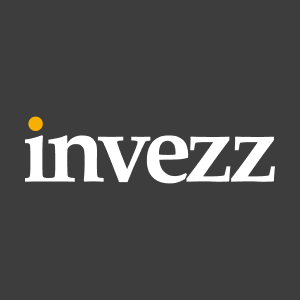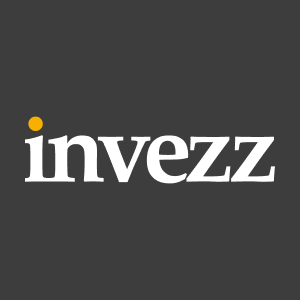Ripple (XRP) and Stellar (XLM) Focus on Building Their Strengths In Cross-Border Payments
5 min read
In a digital era where financial systems are rapidly evolving, Ripple (XRP) and Stellar (XLM) have emerged as two pivotal players in reshaping the landscape of cross-border payments. A recent confidential report from the U.S. Faster Payments Council, dated January 14, 2025, highlights how U.S. domestic payment providers can align with the G20’s 2027 and 2030 targets for improving cross-border transactions. Notably, the report emphasizes the need to promote “inter-industry collaboration” with fintech companies such as Ripple and Stellar, recognizing their distinct strengths and contributions to this global effort. This insight was shared by SMQKE in a recent post on X, underscoring the growing industry acknowledgment of these blockchain networks’ impact. Yes, “Ripple and Stellar both focus on improving cross border payments and have their own strengths.” https://t.co/86SMX3J3Yg pic.twitter.com/9t5jzw0j8m — SMQKE (@SMQKEDQG) May 26, 2025 Accelerating ISO 20022 Adoption and Interoperability The U.S. Faster Payments Council outlines several pathways for domestic payment providers to meet the G20’s goals. Among these is the acceleration of ISO 20022 adoption, a messaging standard designed to create structured, interoperable data formats for seamless cross-border transactions. Ripple and Stellar have long aligned their technological frameworks with these standards, ensuring compatibility with global payment systems. Ripple’s network, already integrated with over 100 banks worldwide, is positioned to benefit from ISO 20022’s push, enabling low-cost, rapid settlement across borders without the delays caused by legacy systems. Beyond technical standards, the report stresses the importance of improving interoperability. Today’s fragmented payment infrastructure can obstruct smooth global transfers. Ripple’s focus on eliminating intermediaries in bank-to-bank transactions directly addresses this challenge, creating streamlined pathways where currencies are converted to XRP tokens and transferred almost instantaneously before being converted again at the destination. Meanwhile, Stellar’s open-access approach allows individuals and SMEs, particularly in underserved regions, to engage with the global economy by leveraging XLM tokens — an effort that amplifies financial inclusion, another key G20 target. Reducing Costs and Expanding Financial Access According to the G20’s outlined objectives, the cost of cross-border transactions should fall below 1% — a figure that has historically been difficult to achieve through traditional banking corridors. The U.S. Faster Payments Council report highlights leveraging distributed ledger technologies (DLTs), including Ripple and Stellar, to minimize intermediary costs and reduce friction. Ripple’s partnerships with banks allow institutions to bypass the traditional correspondent banking network, which typically incurs high fees and delays. Stellar, by contrast, focuses on low-cost access for the unbanked and underbanked populations, using its decentralized platform to reach poorer and less-developed regions. Expanding affordable financial services to underserved markets remains central to both networks’ missions. Ripple’s enterprise-oriented model empowers large financial institutions, while Stellar prioritizes inclusivity by ensuring that anyone — from small businesses to individuals — can tap into cross-border flows. This dual approach is critical to achieving the G20’s broad financial inclusion ambitions, as recognized by the Faster Payments Council. Enhancing Compliance, Transparency, and Risk Management The risks of fraud, money laundering, and terrorism financing loom large over cross-border payments, making regulatory alignment a non-negotiable priority. Ripple and Stellar both emphasize compliance, ensuring that their platforms integrate with global frameworks such as the Financial Action Task Force’s (FATF) anti-money laundering standards and adhere to GDPR-level data protection protocols. The U.S. Faster Payments Council’s report points to the importance of improving transparency, providing real-time tracking of transactions, clarity on exchange rates, and predictable delivery times. We are on twitter, follow us to connect with us :- @TimesTabloid1 — TimesTabloid (@TimesTabloid1) July 15, 2023 Blockchain technology enables these advancements. Solutions like RippleNet and Stellar’s decentralized network allow customers to monitor transactions as they move through the system, offering a level of upfront visibility that is largely absent from conventional wire transfers. This enhanced transparency reduces uncertainty, builds trust, and supports the G20’s call for improved payment system reliability. Driving Industry Collaboration and Innovation Perhaps the most forward-looking aspect of the U.S. Faster Payments Council’s recommendations is its call for industry-wide collaboration. By working alongside fintech innovators such as Ripple and Stellar , domestic payment providers can align with global initiatives and harness the benefits of technological progress. The report specifically mentions partnering with startups innovating in cross-border payments, positioning Ripple and Stellar as essential collaborators in building the future of global finance. Ripple’s strength lies in its tight partnerships with financial institutions, leveraging its blockchain for institutional-grade solutions. Stellar, on the other hand, emphasizes decentralized, grassroots participation, focusing on enabling low-cost transfers for individuals and small businesses in less-developed areas. Together, they offer complementary approaches that, when integrated into the broader financial ecosystem, can transform the cross-border payments landscape. Ripple and Stellar Poised for Leadership As the G20 pushes forward with its ambitious 2027 and 2030 cross-border payment targets, Ripple and Stellar stand ready to play central roles in this evolution. The confidential insights shared by the U.S. Faster Payments Council and highlighted by SMQKE point to a future where collaboration between domestic payment providers and innovative fintech firms becomes essential. With their unique strengths — Ripple’s institutional focus and Stellar’s commitment to inclusivity — both networks are not just improving cross-border payments but are actively reshaping the global financial landscape. The next few years will be crucial. As regulatory, technological, and operational challenges converge, the success of the G20’s objectives will hinge on the ability of players like Ripple and Stellar to work hand-in-hand with traditional financial systems. In doing so, they will ensure that cross-border payments become faster, cheaper, more transparent, and more inclusive than ever before. Disclaimer : This content is meant to inform and should not be considered financial advice. The views expressed in this article may include the author’s personal opinions and do not represent Times Tabloid’s opinion. Readers are urged to do in-depth research before making any investment decisions. Any action taken by the reader is strictly at their own risk. Times Tabloid is not responsible for any financial losses. Follow us on Twitter , Facebook , Telegram , and Google News The post Ripple (XRP) and Stellar (XLM) Focus on Building Their Strengths In Cross-Border Payments appeared first on Times Tabloid .

Source: TimesTabloid



